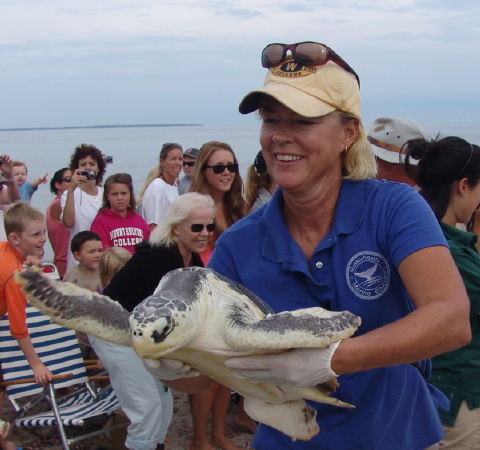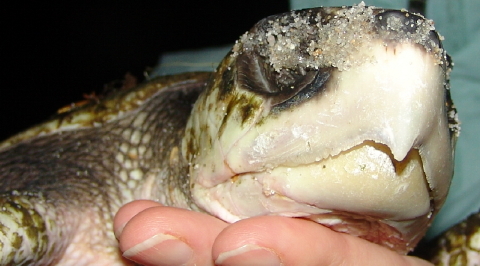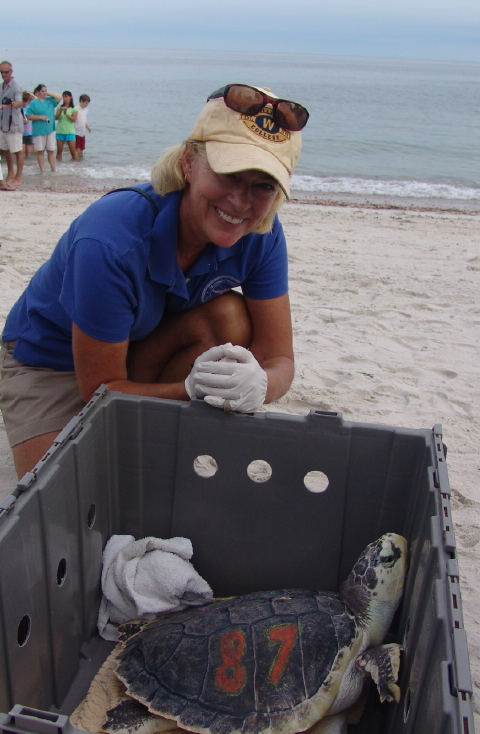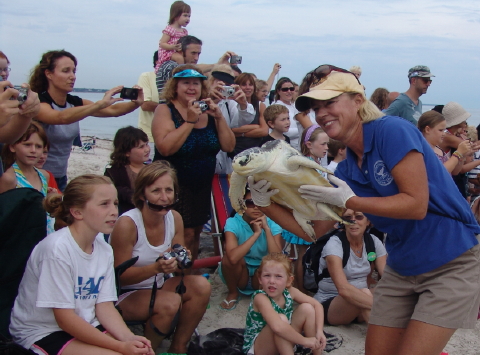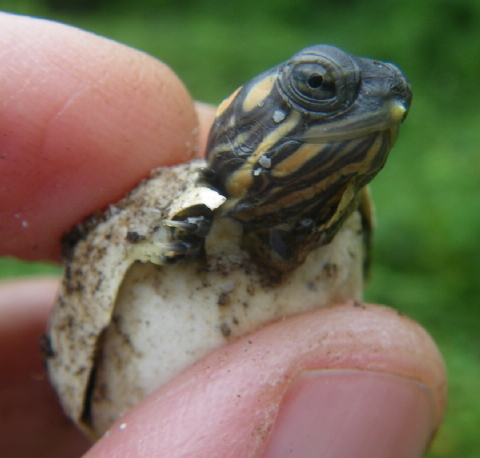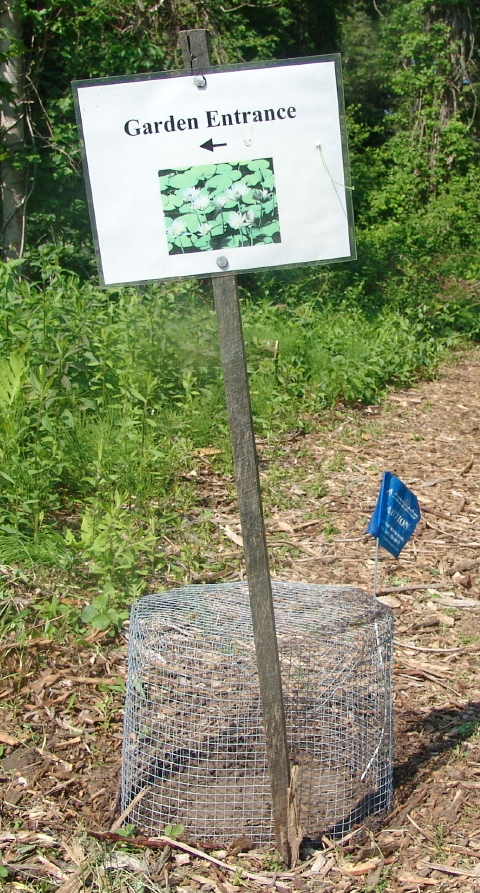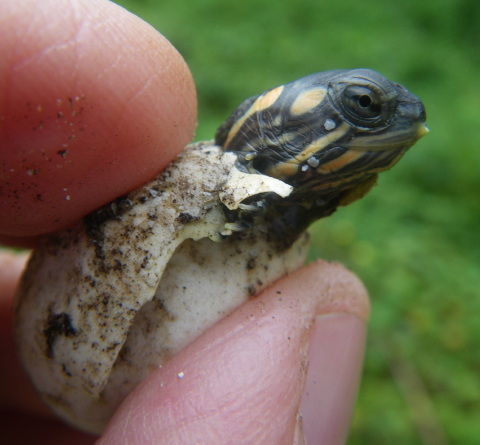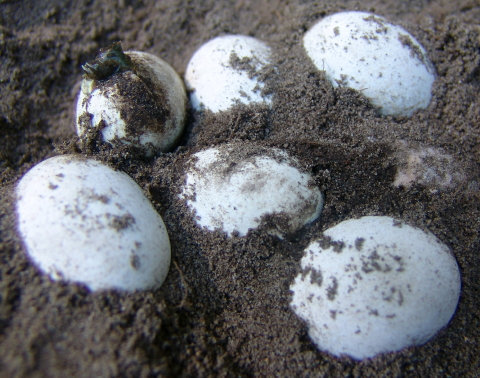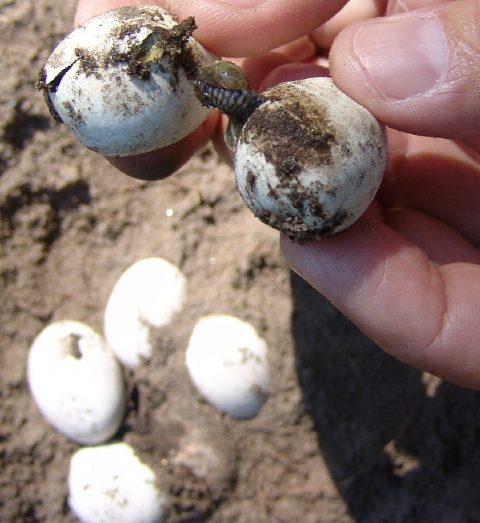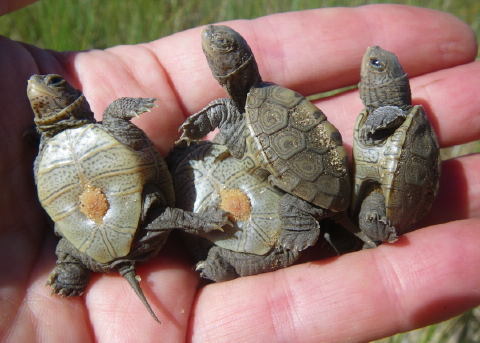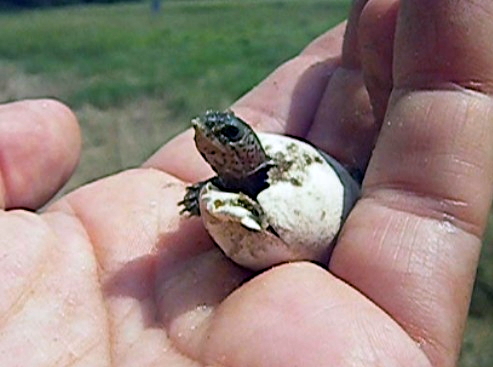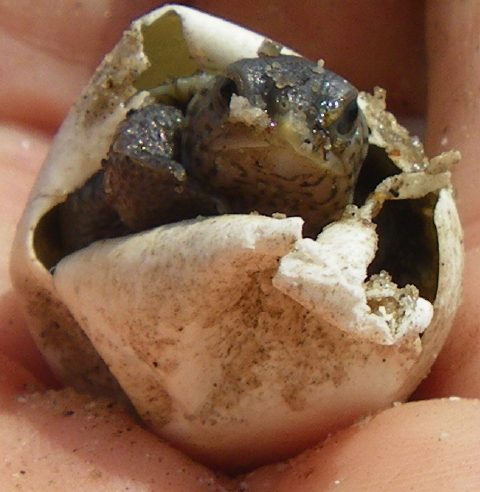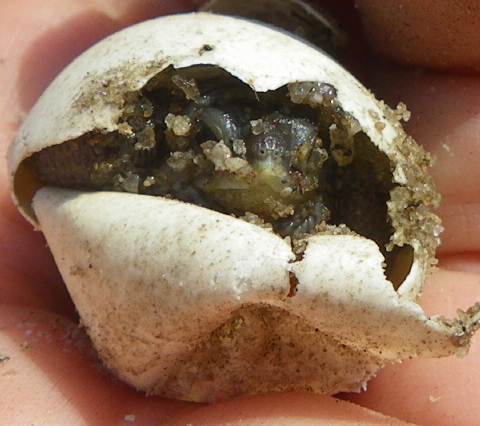Sue Wieber Nourse with Her Rescued Kemp’s Ridley
What a difference nine months makes. Rocky Mountain, a juvenile Kemp’s ridley and one of the most endangered sea turtles in the world, was rescued from Chapin Beach in Dennis on the frigid night of November 28th by Sue Wieber Nourse of Turtle Journal. On August 18th, Sue Wieber Nourse showed off Rocky Mountain to adoring crowds at Dowses Beach in Osterville, just prior to the turtle’s release back into the ocean.  Comparing photographs from November and August, one can hardly believe it is the same animal. (See the original store of Rocky Mountain’s rescue at Night Patrol Rescues Six Rare Sea Turtles.)
Kemp’s Ridley Rescue Makes Front Page News
Rocky Mountain’s November rescue from the storm-tossed, high tide surf off Chapin Beach in the dead of night made front page news throughout Cape Cod. “A night not fit for man nor beast,” as W.C. Fields might say, with winds howling from the west-northwest at a steady 25-to-30 knots, punctuated by 50 mph gusts. Unfortunately, these are the very conditions in which tropical sea turtles strand each fall on Cape Cod’s bayside beaches. Trapped by the geological seine called Cape Cod jutting forty miles into the North Atlantic, tropical sea turtles become cold-stunned as bay water temperatures plunge below 50F. By an accident of their natural lifecycle, most of these trapped and cold-stunned turtles are two and three year old Kemp’s ridley juveniles, a critically endangered species and one of the rarest sea turtles in the world. So, on this night unfit for humans or reptiles, turtles would be tossed ashore like flotsam and jetsam, condemned to certain hypothermic death unless rescued from the beach by dedicated volunteers.
Rescued Critically Endangered Kemp’s Ridley Juvenile
About a quarter mile east of the Chapin Beach ramp, Sue Wieber Nourse of Turtle Journal and CEO Cape Cod Consultants found Rocky Mountain, a small juvenile Kemp’s ridley, rolling in the waves. Measuring a mere 10-inch carapace (top shell) length, the turtle was tossed upside down on the beach. “It looked just like salty brine glistening in the moonlight,” observed Wieber Nourse. She removed the turtle from the receding waves and examined it carefully. She pronounced it “quite lively.” Since Sue had to walk the turtle back into the teeth of the WNW blow, she placed the little critter under her top coat to protect it from the hypothermic effect of the wind blast.
Rocky Mountain Prepared for Release at Dowses Beach
After emergency medical care at the New England Aquarium and rehabilitation at New England University, Rocky Mountain was ready to return to the ocean to restore the dwindling numbers of this critically endangered species. Seventeen comrades would join Rocky Mountain on the journey back to the Gulf of Mexico, mostly Kemp’s ridleys with a couple of green sea turtles mixed in for variety.
Sue Wieber Nourse Shows Rocky Mountain to Crowd
Rocky Mountain’s rescuer, Sue Wieber Nourse, was on hand to show the restored and now healthy Kemp’s ridley to a large crowd of admiring on-lookers who had assembled at Osterville’s Dowses Beach to witness the release. Sue walked Rocky Mountain down the rope line with cameras flashing and children cheering in a scene reminiscent of a presidential campaign appearance.Â
Rocky Mountain Released with 17 Rescued Comrades
Soon the hoopla ended. It was time for the sea turtles to race down the beach and to resume their journey southward toward the Gulf of Mexico. Nothing is more rewarding for a rescuer than to be present when these animals return to the wild to fulfill their role in restoring such an endangered species. For Rocky Mountain, the full rescue cycle came to a successful close on Wednesday evening at Dowses Beach in Osterville, as this juvenile Kemp’s ridley paddled out to sea in Nantucket Sound. Good luck, Rocky Mountain! It was so nice to know you. Hope to see you on a nesting beach in Rancho Nuevo or Padre Island in another 15 to 20 years.
